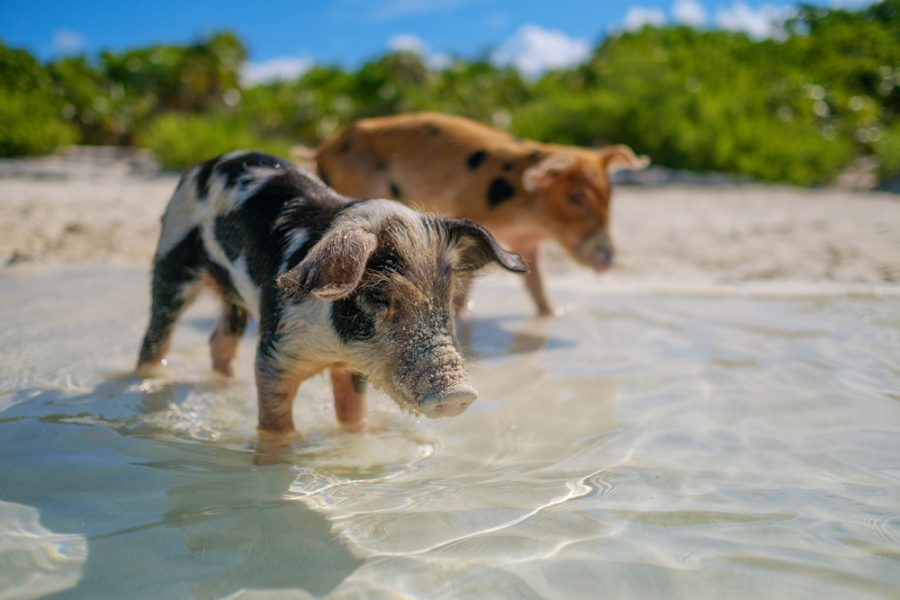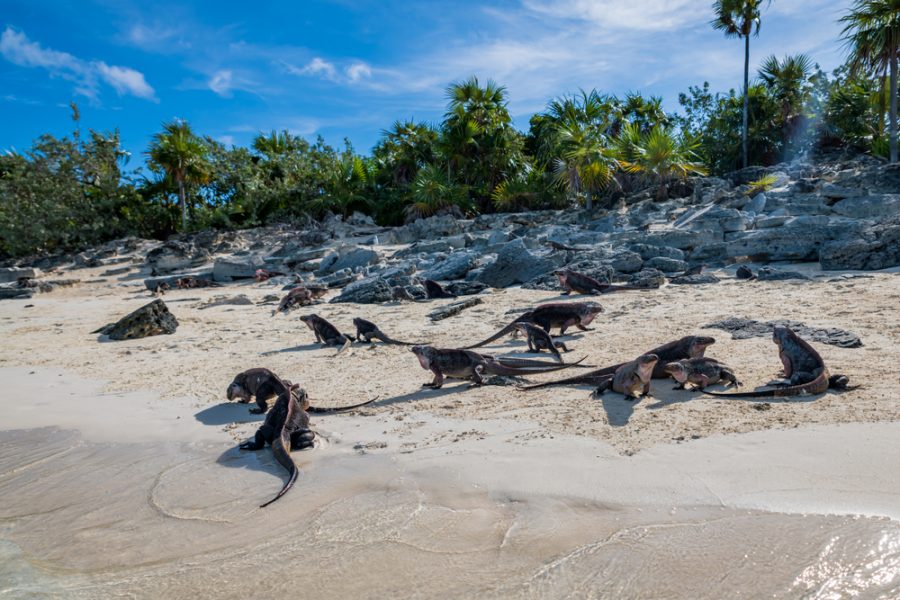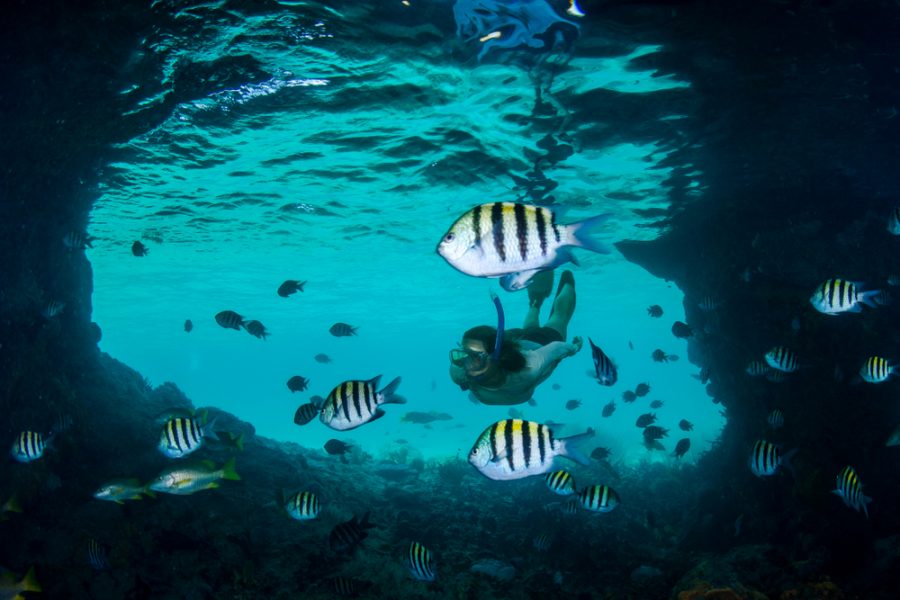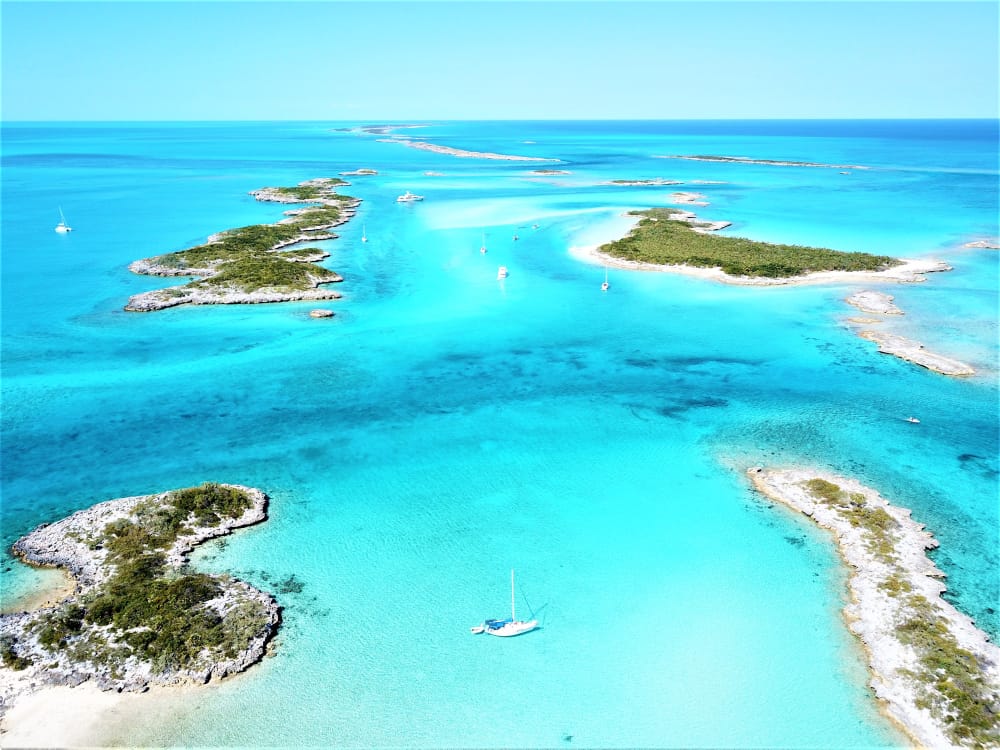Best known for their idyllic turquoise waters and over 365 cays, the Exumas is also home to one of the world’s largest marine parks. As one of the oldest national parks in The Bahamas, this island chain is home to a spectacular array of wildlife that can be seen all year round.
If you seek memorable wildlife experiences, consider a detour from the typical holiday stop-offs with one of these extraordinary, close, and personal animal encounters.
Here are some of the top wildlife experiences the Exumas has to offer.
Feed the pigs on Big Major Cay

Easily accessible, Big Major Cay is an uninhabited island in Exuma, home to a large colony of friendly pigs. While it is rumored that passing sailors left the pigs, Pig Beach is unique in its charm, delighting visitors with scenes of undeniable beauty. These happy pigs share the island’s crystalline waters with discerning seafarers all year round and love getting to know their human counterparts. These remarkable animals graciously accepting snacks and attention make for fantastic company and even better photo opportunities.
The cay is perfectly sheltered from natural storms, offering attractive tranquillity throughout the year. That being said, the best time to see these lovable creatures are the winter months. Much drier and less humid, December through to April make for a much more comfortable visit.
Swim with the sharks on Compass Cay

Take a dip in the shallow waters off Compass Cay, an exclusive island in the Outer Exumas, and enjoy a thrilling swim with the resident nurse sharks. Despite their daunting silhouette under the water’s surface, these 2-meter long nurse sharks are quizzical and placid creatures that feed off small fish and crustaceans on the seafloor. Surrounded by a sandbank, the marina’s waters are apparent, making it a fantastic immersive experience for all. With snorkeling gear, you can join them underwater and listen to the high-pitched whistles they use to communicate. Alternatively, you can stand on the submerged viewing platform and pet them as they glide past. The viewing platform coupled with see-through waters makes for an incredible photo opportunity.
Get up close with the iguanas on Allen Cay

Located just 30 minutes by boat from Nassau, horseshoe-shaped Allen Cay is the gateway to the Exumas. Allen Cay is home to beautiful anchorages and picturesque beaches. However, the natural appeal is the Allen Cay rock iguanas. At nearly three feet in length, often basking on the sun-lapped beaches or cooling-off in the surf, the rock iguanas are hard to miss. As Allen Cay is uninhabited, you can only reach the island by boat. Allen Cay is easily accessible via a tender or dinghy ride with excellent anchorages off the southern shore. If you choose to pay the iguanas a visit on your holiday, don’t forget to take a handful of fruit for these spectacular reptiles.
Snorkel Thunderball Grotto alongside exotic fish

Named after the iconic 1965 James Bond film, Thunderball Grotto has gained a world-renowned reputation. Accessed via a hidden entrance coming off from the beach, the underwater cave system surrounds a hollow center, making the destination a striking haven for avid divers and snorkellers. Populated by hundreds of exotic fish, the wide tunnels are illuminated by beaming spotlights reflected around the hollow center, making a snorkel excursion a colorful and mesmerizing experience. To enjoy the Thunderball Grotto in true Bond style, visiting the caves at high tide is recommended. During these times, divers can make their way through various tunnels, and for the most relaxed snorkel, there is always the option to take things easy in the open water center.
Of course, the best way to get up close and experience these magnificent creatures is with a luxury Exumas yacht charter. So, if the idea of feeding the pigs, swimming with sharks, or diving down to otherworldly waters with an array of tropical marine life excites you, make sure you request that your charter broker add these incredible animal attractions to your charter itinerary.
